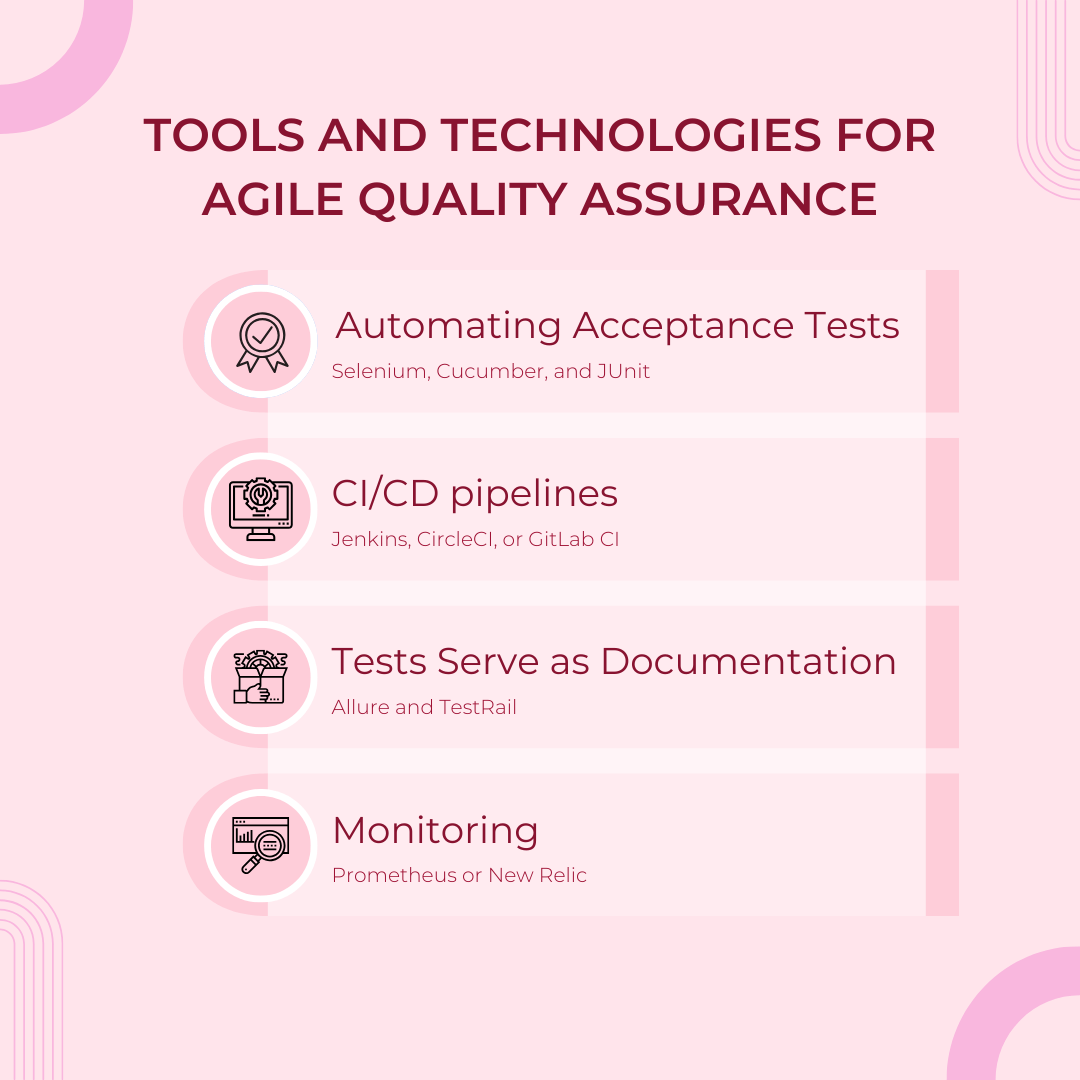Introduction
In the fast-paced world of Agile development, maintaining high-quality deliverables can be challenging. Teams often struggle with inconsistent practices and unclear standards, leading to frequent defects and project delays. This unpredictability not only hampers progress but also affects client satisfaction.
Quality patterns offer a structured approach to address these issues by providing proven solutions and best practices. By integrating these patterns, Agile teams can enhance consistency, streamline processes, and improve overall product quality.
Challenges in Agile Quality Assurance
The transition from traditional Waterfall methodologies to Agile development promises increased flexibility and faster delivery. However, this shift also introduces several quality assurance challenges that teams must address to ensure successful outcomes.
One primary challenge is managing regression issues. With frequent iterations and continuous integration, new changes can inadvertently break existing functionality if not properly tested. This requires robust and automated testing frameworks to quickly identify and resolve defects before they impact the product.
Another common issue is the lack of comprehensive documentation. Agile emphasizes working software over extensive documentation, which can lead to insufficient records of features, decisions, and changes. This deficiency can cause misunderstandings among team members, complicate onboarding processes, and make future maintenance more difficult.
Additionally, teams often struggle with maintaining consistent quality standards amidst rapid development cycles. The pressure to deliver quickly can result in cutting corners on code reviews and testing processes, leading to technical debt and unstable releases.
These quality challenges can significantly impact project timelines and business outcomes. Frequent regressions and poor documentation can cause delays, increase development costs, and erode stakeholder confidence. Moreover, releasing low-quality products can damage the company's reputation, reduce customer satisfaction, and ultimately affect the bottom line.
Addressing these challenges requires a proactive approach to quality assurance, integrating best practices such as automated testing, clear documentation standards, and continuous improvement processes within the Agile framework. By doing so, teams can leverage the benefits of Agile development while maintaining high-quality outputs that meet business objectives.
Core Quality Patterns in Agile Development
Implementing key quality patterns in Agile development is crucial for maintaining high standards without sacrificing speed.
- Treat Acceptance Criteria as Tests: By defining clear and detailed acceptance criteria, teams ensure that the expected outcomes are well understood and can be tested effectively.
- Automate Acceptance Tests: Automated tests save time and reduce human error, ensuring that new changes don’t break existing functionality.
- Automate Build and Release Processes: Integrating automated tests into CI/CD pipelines ensures consistent, reliable releases.
- Use Acceptance Tests as Documentation: Tests double as living documentation, keeping information current and accessible without extensive manual documentation.
- Monitor Everything and Act Immediately: Continuous monitoring enables teams to detect and resolve issues quickly, maintaining software quality throughout development.
These patterns, when integrated into Agile practices, help teams balance speed with quality, ensuring robust and maintainable software.
Implementing Quality Patterns in Agile Teams
Introducing quality patterns into Agile teams requires a structured approach. Start by gradually integrating each pattern to avoid overwhelming the team. Begin with automating acceptance tests and build processes, as these have immediate benefits.
Expect resistance to change, particularly from those accustomed to manual processes or traditional methods. Address concerns through training and showcasing successful case studies that highlight the long-term benefits.
Continuously monitor and adapt the implementation. Regularly review the effectiveness of each pattern, making adjustments as needed to align with team dynamics and project goals.
Tools and Technologies for Agile Quality Assurance
Implementing quality patterns effectively requires the right tools.
For automating acceptance tests, tools like Selenium, Cucumber, and JUnit are popular choices, offering robust support for various programming languages and frameworks. CI/CD pipelines can be streamlined with Jenkins, CircleCI, or GitLab CI, which integrate seamlessly with test automation tools, ensuring consistent builds and releases.
To make tests serve as documentation, tools like Allure and TestRail can be used to generate clear, accessible reports. For monitoring, consider using Prometheus or New Relic to track performance and quality metrics in real-time.
Evaluating these tools regularly ensures they continue to meet the team's evolving needs, keeping Agile processes both efficient and effective.

Key Takeaways
- Quality is Crucial in Agile: Implementing quality patterns prevents common pitfalls like regressions and poor documentation.
- Core Patterns: Include automated tests, CI/CD integration, and using tests as documentation.
- Implementation Strategy: Introduce patterns gradually, address resistance, and adapt based on team feedback.
- Essential Tools: Use automation, CI/CD, and monitoring tools like Selenium, Jenkins, and Prometheus to support quality efforts.
- Continuous Evaluation: Regularly assess and adjust tools and practices to maintain efficiency and quality in Agile processes.
Conclusion
In Agile development, quality cannot be an afterthought. By adopting core quality patterns such as automated testing, CI/CD integration, and using tests as living documentation, teams can ensure they maintain high standards while delivering quickly.
Implementing these practices gradually, with the right tools, helps overcome resistance and fosters a culture of continuous improvement. Ultimately, focusing on quality in Agile processes leads to more stable, maintainable, and successful software, driving long-term business success. Prioritizing quality is not just beneficial—it's essential.

